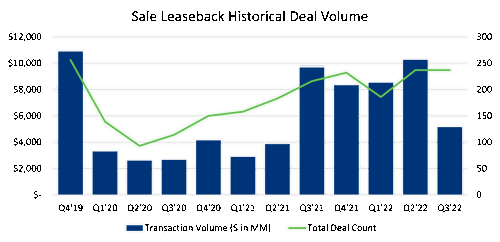Real estate plays an often-overlooked role in M&A transactions. It is common for business owners (particularly in the middle-market) to own an operating business and its related property holdings (e.g., buildings, facilities, office space, underlying land, etc.). While the combination of operating assets and real property investments may be attractive for business owners seeking full control of their business and related cash flows, a liquidity event creates a number of important considerations, risk, and options for business owners/sellers and buyers. In this article, UHY Corporate Finance explores some of the key considerations and options available to buyers/sellers of businesses as it relates to real estate holdings to ensure a successful outcome for all parties involved. “To successfully navigate today’s ever-changing and dynamic M&A market, investment bankers and sellers need to focus on key deal points to maximize value and increase the probability of a successful closing,” says Jeremy Falendysz, Partner and Managing Director of UHY Corporate Finance. “And real estate, while often overlooked by dealmakers, is one of those key deal points.”
Packaging real estate and business operations
Executing M&A transactions require significant investments in time and resources. As such, sellers and their investment bankers typically pursue the path of least resistance, which often involves packaging the real estate and business as part of a single transaction. For the investment bankers, M&A attorneys, and owners, this typically results in a “cleaner deal” (i.e., selling all assets in a single transaction vs. separate sale processes, buyers, etc.). Moreover, including the operating business and real property in a single transaction reduces ongoing tenant and market risk for sellers post-close. If, for example, new ownership relocates operations post-close, sellers who held onto the real property would otherwise be left with vacant property to remarket and/or sell. The owner in this case would retain possession of a non-cash-flowing property and face exposure to the commercial real estate market. When one considers the difficulty of marketing a potentially highly specialized, industrial space without a tenant, the prospect of negotiating favorable lease and/or purchase terms becomes even more daunting. Thus, including the operating business and real property in a single transaction perfectly aligns the interests of the owner of both assets (i.e., the buyer in this case).
That said, for those sellers pursuing a value-maximizing transaction, packaging the real estate and business as part of a single deal comes with its own drawbacks, including (i) the fact most buyers prefer not to invest in real property (i.e., they often prefer NOT to acquire the real property, and instead invest their cash and resources strictly in operating assets) and (ii) sale transactions often overlook the true value of real property.
Sale-leaseback: A parallel process
Sellers looking to maximize the return on both their operating business and real property may choose to exclude the real estate from the sale of the business and sell the real estate in a separate and/or parallel transaction. A sale-leaseback describes a financial transaction in which an owner of real property sells the property to a third-party real estate investor and leases it back from the new owner. Such a transaction allows the owner-occupant of a property to sell it to an investor-landlord and execute a lease agreement in order to maintain occupancy of the property without owning it and tying up capital in real property. The seller becomes a lessee of the property while the real estate investor becomes the lessor.
Similar to a sale process for operating assets, sale-leaseback transactions serve as a critical tool in maximizing the value of real property for owners. Commercial real estate transactions introduce complexity, regardless of whether they are the primary asset in a deal. Property diligence will include workstreams such as purchase agreement negotiation (i.e., Representations and Warranties), the review of leases, title reports, and other documentation, in addition to possible completion of environmental impact assessments. Given the unavoidable difficulty of real estate diligence, sellers and their advisors should not determine the treatment of real estate solely in pursuit of a “cleaner deal.”
While a sale-leaseback, or similar transaction, often requires additional advisors and adds complexity beyond the scope described above, one could achieve incremental value well in excess of the additional costs involved. “Sale-leaseback capitalization rates, typically in the 6% to 8% range, can generate an implied EBITDA multiple greater than 12.0x,” says Wiley Lane of UHY Corporate Finance. “As such, if a seller is entertaining the combined sale of an operating business and its real property at a middle-market EBITDA multiple of 6.0x, they are effectively selling their real property at a steep discount to fair market value.”
Another key benefit of selling real estate separate from an operating business is both assets can be directed toward and sold to investors who better understand, and more highly value, each asset class. Real estate investors and buyers of operating business (e.g., corporate buyers, private equity funds, family offices, etc.) have very different risk tolerances and investment criteria, thus making each class of investor much more geared toward their specific investment class. Moreover, these institutional buyers possess the capital to pay all cash upfront for properties, which allows them to sidestep the mortgage process and avoid the escalating interest rates plaguing today’s real estate market. UHY Corporate Finance works closely and maintains strong relationships with a number of highly qualified sale-leaseback professionals who manage the sale-leaseback marketing process and assist in generating highly attractive outcomes for sellers.
In summary, sellers including property in a broader sale process alongside their operating business risk leaving value on the table by missing out on the higher implied multiples associated with real estate. Furthermore, they permit buyers the opportunity to independently pursue a sale-leaseback post-close to capture this value themselves.
Sale-leaseback market overview
Examining recent market dynamics, Q4 of 2021 witnessed the most attractive sale-leaseback pricing environment ever tracked, with capitalization rates holding steady between 6% and 8%. While capitalization rates technically represent the yield of a property over a one-year time horizon (i.e., a 7.5 cap-rate means an investor should expect a 7.5% annual gross income on the value of an investment), they are better understood as a measure of risk (i.e., the higher the cap rate, the higher the risk). In summary, the 2021 (and even H1 2022) pricing environment presented highly attractive pricing terms. That said, similar to the broader M&A market, continued market uncertainty and rising interest rates in H2 2022 and into 2023 have altered the playing field to varying degrees.
While the market has seen an increase in capitalization rates more recently (in the 100-200 basis point range), opportunities remain to achieve attractive values for strong real estate assets, and certainly generate much higher values than those implied by EBITDA multiples seen in the operating business M&A market. Smaller credit or tertiary locations have observed the most significant capitalization rate expansion. As expected, lower quality assets have been impacted most negatively. Primary market/investment grade transactions, on the other hand, have seen little-to-no cap rate expansion thus far. Even more encouraging is that Q3 2022 is the second-highest quarterly sale-leaseback total (from a deal count perspective) on record, as illustrated in the figure below. This is fairly remarkable considering the general state of the real estate market over the past several quarters.

Source: SLB Capital Advisors
Business owner/sellers must also study how their peers approach such decisions when presented with similar options. As sellers of operating assets with real estate holdings have become more informed, the amount of seller-led sale-leasebacks has skyrocketed. In fact, conservative estimates indicate these types of transactions have doubled in the last two years alone. “Sellers, and their investment banking advisors, can and should continue to take advantage of these M&A ‘arbitrage’ opportunities,” says Lane.
Conclusion
Identifying the right transaction advisor and building the right deal team will help minimize risk and maximize value in any M&A transaction. From an advisory standpoint, UHY Corporate Finance encourages all sellers to seek out an independent appraisal or Opinion of Value (“appraisal-light”) on their properties prior to taking their operating business to market when real property is involved. The goal being, of course, to better position the property as a real estate asset. The decision to pursue a sale-leaseback, however, is made on a client-by-client and deal-by-deal basis. UHY Corporate Finance can assist business owners in identifying and capturing value in their real estate holdings, including the assessment of a potential sale-lease-back prior to or alongside the sale of their operating business.
For more information on current trends in real estate M&A, or to learn more about what a sale-leaseback might look like in today’s market, reach out to a member of UHY Corporate Finance today!
Have a question?
Fill out the form to speak with our corporate finance team
By submitting this form, you agree to be contacted by UHY.


